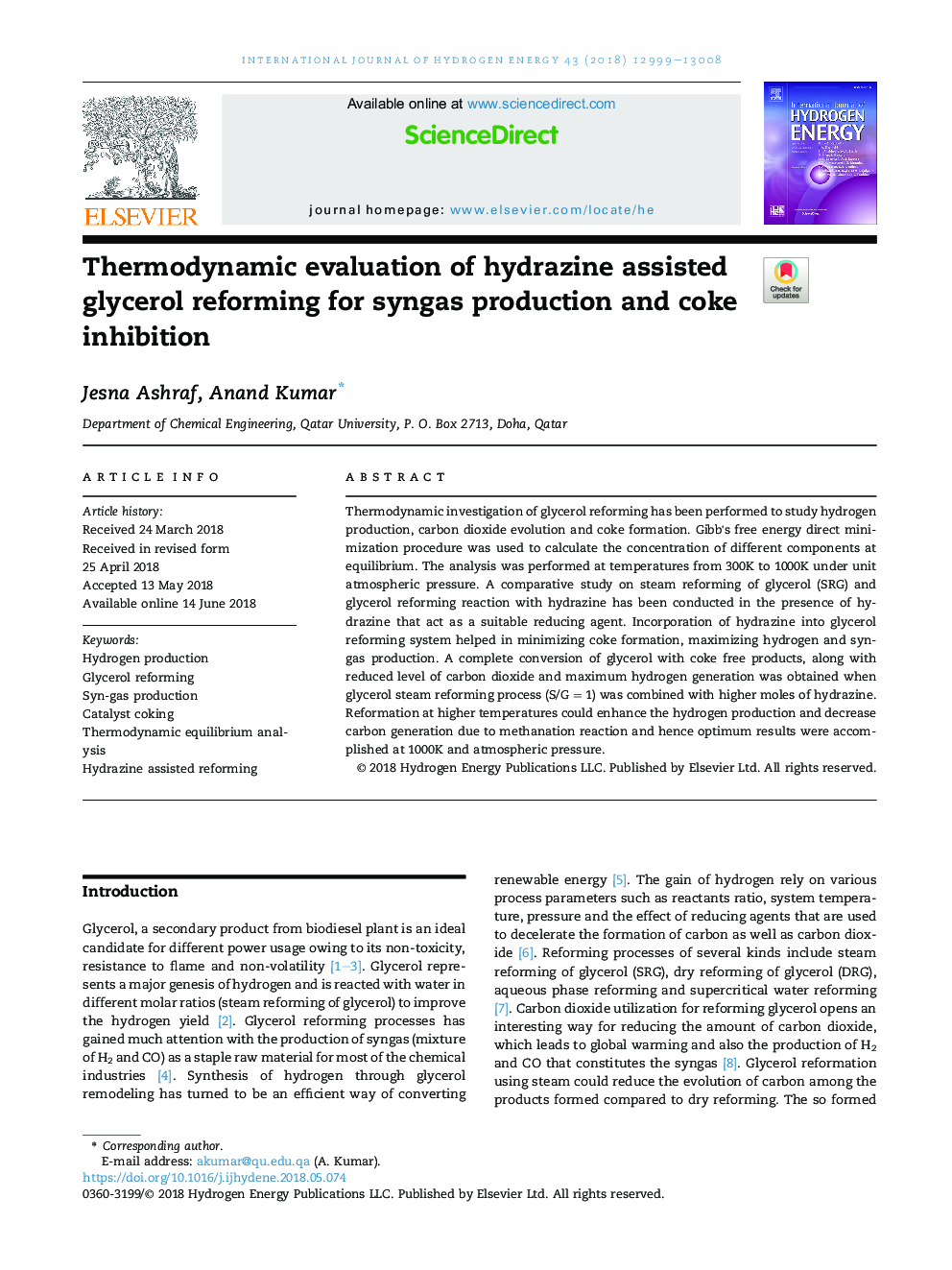| Article ID | Journal | Published Year | Pages | File Type |
|---|---|---|---|---|
| 7705409 | International Journal of Hydrogen Energy | 2018 | 10 Pages |
Abstract
Thermodynamic investigation of glycerol reforming has been performed to study hydrogen production, carbon dioxide evolution and coke formation. Gibb's free energy direct minimization procedure was used to calculate the concentration of different components at equilibrium. The analysis was performed at temperatures from 300K to 1000K under unit atmospheric pressure. A comparative study on steam reforming of glycerol (SRG) and glycerol reforming reaction with hydrazine has been conducted in the presence of hydrazine that act as a suitable reducing agent. Incorporation of hydrazine into glycerol reforming system helped in minimizing coke formation, maximizing hydrogen and syn-gas production. A complete conversion of glycerol with coke free products, along with reduced level of carbon dioxide and maximum hydrogen generation was obtained when glycerol steam reforming process (S/GÂ =Â 1) was combined with higher moles of hydrazine. Reformation at higher temperatures could enhance the hydrogen production and decrease carbon generation due to methanation reaction and hence optimum results were accomplished at 1000K and atmospheric pressure.
Related Topics
Physical Sciences and Engineering
Chemistry
Electrochemistry
Authors
Jesna Ashraf, Anand Kumar,
